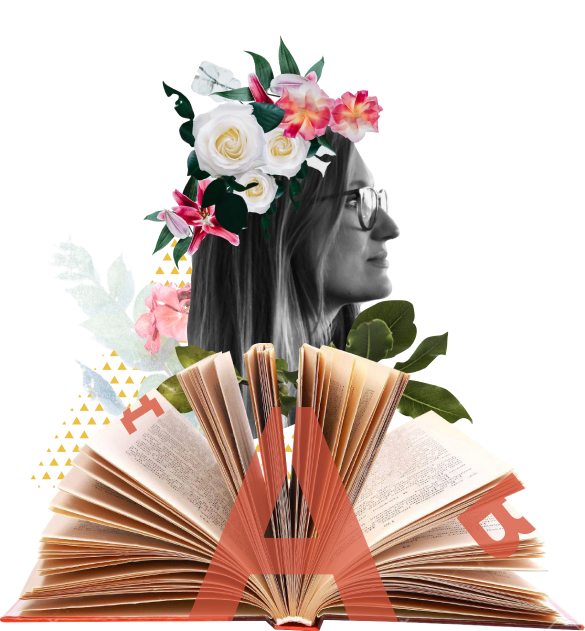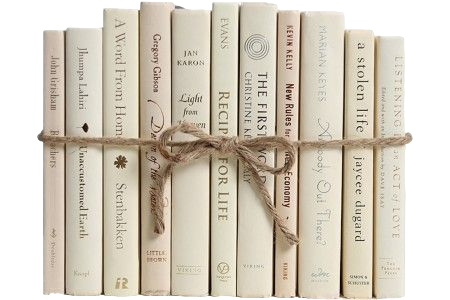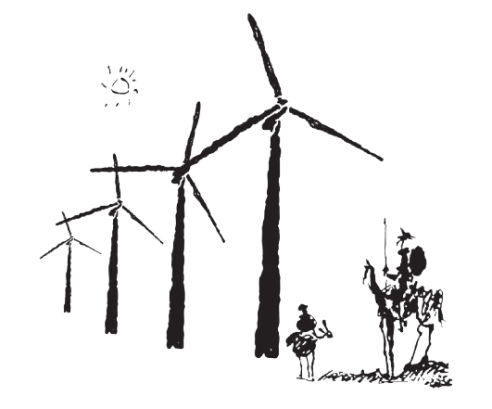How to write a novel. From concept to completion
8-week Online Course
Open to writers of any level
Open to writers of any level







WE START ON THE 15th of June 2023
You’ll have an opportunity to share your manuscript with a literary magazine editor


BAND
An online creative writing school
An online creative writing school
Mondays and Wednesdays
07:30 pm to 09:00 pm
Access at any time
You’ll get support and advice from professional editors who work with novels

You’ll exit the course with a draft of your first chapter, an outline of your novel and tools for bringing your project to completion





About the course
This class is designed both for new writers and for those who already have some experience in storytelling. Under the guidance of professional editors, students will develop their novel idea into a tightly organized structure, driven by strong, complex characters with their own narrative arcs. Each student will write the first––and arguably the most important––chapter of their novel, which will serve as a gripping beginning to an unputdownable book.


What you’ll learn
How to write that first chapter
Every writer who has an idea for a story faces the same problem of how to begin. The first thirty or so pages of a novel set up the readers’ expectations for what’s to come and also teach them how to read the book. What’s the genre? What are the rules of the world of the novel? Who are the characters? Whose point of view is the story told from? Additionally, here the readers decide if they want to continue reading, so the first chapter has better be captivating.
How to create fully realized characters
Literary fiction pays more attention to character as opposed to plot, but a contemporary novel in any genre benefits from characters who feel more like real people than stick figures. We’ll talk about why motivation is the key to developing your characters, how to use physical details and complicate power dynamics. Making characters come alive is a skill that can be learned and perfected.
How to structure your novel from beginning to end
A novel isn’t just a series of events that take place over a period of time––it’s much more than that. It has to work as a coherent whole, in which every character, conflict and scene serves the writer’s intention. What are the mechanics of story and plot? Does the plot make sense? How do I build narrative arcs and come up with plot points? Are there any double beats in the story? How do I create tension? These are some of the questions students will address when outlining their novel-in-progress.
How to write scenes and dialogue
Each scene in a novel has a job: it either lets the reader get to know the character or moves the plot. Ideally, it should do both of these things at once and has to have its own structure. Good dialogue, in turn, has to be evocative of actual speech, but can’t a replica of it and should always characterize. Students will practice writing effective dialogue and constructing compelling scenes.
Modern narrative techniques
Fiction is always about pacing and delayed gratification, which applies to any novel. We’ll explore what makes stories powerful and what tools are available to writers to make their readers engage deeply with their work, focusing on flashbacks, flash forwards, subtext, symbolism, sensory detail, cliffhangers, foreshadowing and suspense. Students will try to incorporate some of these techniques into their own writing.
How to write the ending
They say that the ending expresses the heart of the story, but finding your ending can be an agonizing process. We’ll talk about how writers approach this crucial task, asking themselves if what happens in their last chapter feels satisfying and earned. Students will find out what obligations––if any––a writer has to their readers and how to best manage the readers’ expectations.



Editing and revision
Finally, we’ll focus on techniques that will allow students to complete their novels at their own pace. Revision strategies such as perfecting the text on the sentence level, cutting clutter and deepening the material will be discussed along with time-management tips that will make the writing process productive and enjoyable.
This course is structured around generative writing exercises and extensive critiques from editors. Together, both of these enable our students to get an understanding of what their novel might look like and take steps toward actually writing it. Additionally, each student will have a chance to learn the basics of craft and develop their own writing style.








Продуманная траектория обучения на каждом шаге
During the course, each student will get written instructor feedback.
At the end of the course, students will have a chance to form a community of fellow writers — a writing group.
Our professional editors will critique student work, providing gentle guidance and support. You’ll get feedback on your writing as well as recommendations that’ll help you create the fully realized work of art your novel intends to be and reach your target audience.
Every two weeks, its members will submit their new chapters to the group and discuss them, providing feedback and motivation for finishing the novel.
We’ll discuss what a professional manuscript should look like and connect our best students to a literary magazine editor, who will then read their first chapter and share their thoughts on how to make it better.

Students will have a chance to show their manuscript to a literary magazine editor.





The way we teach
Online lectures
Guidance and support
The first chapter and a novel outline
Each class begins with a 1-hour craft lecture and is followed by a 30-minute Q&A session with the instructor. You can watch it in real time or at a later time that works better for you.
After each class, students will turn in a writing assignment. An editor will assess it, providing feedback and guiding them through the writing process.
By the end of the course, you’ll have the first chapter of your novel, a well-developed outline and a sense of what steps you need to take to complete your project and get it into the world. This course is a good fit for anyone with a novel idea or even a rough draft of a novel.





Course Structure
7 core lectures on craft
Every week
students submit a writing assignment and follow directions for independent work
Surprise guest lectures










Assignment 2. Choose your narrator and write one scene up to 1000 words (submit to editor)

Assignment 1. Analyze the point of view and the narrator of a novel from the reading list (independent work)
Whose story is this? How do I find my point-of-view character? Why is this so important for my story? We’ll explore the pros and cons of different points of view and discuss which ones might be best for you story.
Point of View and the Narrator.
2-ая неделя


Assignment 1. Analyse a scene from the novel of your choice. What makes it effective? (independent work)
Assignment 2. Write a scene that is primarily driven by dialogue (submit to editor)
Assignment 2. Write a scene that is primarily driven by dialogue (submit to editor)

No one wants to read flat dialogue that doesn’t land and scenes in which nothing happens. What are the elements of an effective scene? How do I write punchy, yet lifelike dialogue that drives conflict? Dialogue as the plot’s engine. Practical exercises.
Scene and Dialogue.

Assignment 1. Analyze the style of your chosen novel from the reading list (independent work)
Assignment 2. Rewrite the scene, using the editor’s feedback (submit to editor)
Assignment 2. Rewrite the scene, using the editor’s feedback (submit to editor)

What’s the relationship between language and plot? Or that between language and character? Why is writing in first person similar to a performance? We’ll discuss how you can create your own unique style by using tone and rhythm, description and details.
Elements of style. How to Find Your Own Voice.

Assignment 1. Analyze a novel of your choice from the reading list in terms of turning points and key events (independent work)
Assignment 2. Write a three-page synopsis of your novel, breaking it down into chapters (submit to editor)
Assignment 2. Write a three-page synopsis of your novel, breaking it down into chapters (submit to editor)

Different ways of structuring your novel, from the classical three-act model and the more commonly used 5-part structure to Freitag’s pyramid and John Truby’s 22 building blocks. Narrative techniques such as flashbacks, flash forwards, subtext, symbolism, sensory detail, cliffhangers, foreshadowing and suspense. The reader wants to know what happens next, but you, the writer, want them to feel transported. How do you achieve the perfect balance? Is there such a thing as a good, satisfying ending that just feels right? Climax and resolution.
Plot and Structure.
3-я неделя


Assignment 1. Analyze three novels from the reading list in terms of their premise, theme, characters and setting (independent work)
Assignment 2. In two to three pages, describe the premise, theme, characters and setting for your novel (submit to editor for feedback)
Assignment 2. In two to three pages, describe the premise, theme, characters and setting for your novel (submit to editor for feedback)

We’ll discuss what makes the novel different from a novella or a short story and consider the main types of contemporary novels. How do writers come up with ideas? Which themes work best for a novel in a particular genre? The theme is the story’s deeper meaning. How does it relate to character, setting and conflict? You’ll be able to stress-test some of your ideas and develop one of them into an outline.
Novel genres. Themes, Ideas and Inspiration.
1-ая неделя

Assignment 1. Identify the main and the secondary characters in a novel of your choice from the reading list (independent work)
Assignment 2. Describe the main and the secondary characters of your novel (submit to editor)
Assignment 2. Describe the main and the secondary characters of your novel (submit to editor)
In this session, our focus will be on the novel’s main characters and their relationship to the plot. What are the ways of revealing character through plot? The six essential plot elements of a story and how to use them to create a solid narrative arc. Strategies for creating rising action. Motivation and conflict, desire and obstacles. What are the emotional stakes of the story and why are they so important?
The Character is the Plot.

Assignment 2. Edit your synopsis (submit to editor)
How do you finish this project that seems insurmountable? Writing discipline and creating a daily schedule to keep moving forward. Dealing with self-doubt and setbacks. Why revision is widely believed to be the most important part of writing and what skills it involves.
Editing, Revision and Time Management Tools.
Assignment 1. Write the first draft of your first chapter: 5-7 scenes, up to 10,000 words (submit to editor)
The 10 best student synopses and first chapters will be presented to a literary magazine editor.

The Pitching Session.
Александра Щеткина
президент фонда «Альцрус» (помощь людям с болезнью Альцгеймера)
С семьей курсов Band я познакомилась случайно, но, как это обычно бывает, случай оказался тем самым, который «в нужное время и в нужном месте». Я прошла два курса по кинематографии, сняла короткометражный фильм, набрала материалов для документального кино. Мастерские Бэнда позволили мне забыть о страхе перед творческим процессом, страхе быть непонятой и осмеянной. Мы просто творили как могли, от души — и это самое главное, самое искреннее на курсах.
Поэтому спустя несколько лет я снова оказалась в семье Бэнд на литературной мастерской по фикшн. Как всегда, буквально впрыгнув в последний вагон, я погрузилась в творчество.
Это действительно очень ресурсное сообщество, которое помогает начинающим авторам поверить в себя, увидеть своих читателей, услышать их мнение о твоем творчестве и вдохновиться! Я не знаю, как «бэнды» это создают, но это работает! И, конечно, очень важно отдельно сказать о домашних заданиях. На курсах «домашки» много, и это заставляет мозг работать, творить, освобождаться от своих страхов. Это самое ценное! Это та магия, которая делает из человека писателя, режиссера, творца. Наверное, звучит как реклама, но, пройдя уже четыре курса Бэнда, я могу твердо сказать: это стоит того, это помогает поверить в себя, почувствовать свободу — за ней я иду учиться в Бэнд.
Поэтому спустя несколько лет я снова оказалась в семье Бэнд на литературной мастерской по фикшн. Как всегда, буквально впрыгнув в последний вагон, я погрузилась в творчество.
Это действительно очень ресурсное сообщество, которое помогает начинающим авторам поверить в себя, увидеть своих читателей, услышать их мнение о твоем творчестве и вдохновиться! Я не знаю, как «бэнды» это создают, но это работает! И, конечно, очень важно отдельно сказать о домашних заданиях. На курсах «домашки» много, и это заставляет мозг работать, творить, освобождаться от своих страхов. Это самое ценное! Это та магия, которая делает из человека писателя, режиссера, творца. Наверное, звучит как реклама, но, пройдя уже четыре курса Бэнда, я могу твердо сказать: это стоит того, это помогает поверить в себя, почувствовать свободу — за ней я иду учиться в Бэнд.
Никас Котич музыкант и режиссер
Что может дать киношкола?
Знания, умения, знакомства, атмосферу, волшебный пендель. DIY — do it yourself — лозунг, которым я живу осознанно более 17 лет. У меня в жизни часто происходят волшебные вещи: пожелаю что-то от чистого сердца – тут же сбудется.
Несколько лет назад я находился в глубокой прострации из-за распада моей десятилетней музыкальной группы — в муках выбора творческого самоопределения, в инфошуме массового безумия. И единственное, чего я желал: учиться в клёвой киношколе, без занудства, снобизма и долгих лет погружения, чтоб do it yourself, чтоб обязательно собой остаться. И чтоб встретить режиссёра — человека на одной волне, со всем вот этим вот странным и непонятным, что творится у меня внутри — настоящего рок-н-рольщика.
Так я оказался в Movieband. Даже два раза – мне так понравилось.
Получил ли я всё, что хотел? О, да! И много больше: то, чего я никак не ожидал. Казалось, такое только в сказках бывает.
И внезапно, кроме самого кино и всевозможного арта, у меня в жизни появляются два действующих вулкана – сразу два шикарных музыкальных коллектива: Illayalli и Sherlock Blonde. Эти люди просто материализовались, как только я перешагнул порог #movieband. С ребятами с разных курсов мы наснимали клипов, фильмов, реклам, промо, готовим новые проекты. И всё это наполнено радостью. Короче. Теперь вы знаете, куда стоит топать за реальным кино-рок движем.
Несколько лет назад я находился в глубокой прострации из-за распада моей десятилетней музыкальной группы — в муках выбора творческого самоопределения, в инфошуме массового безумия. И единственное, чего я желал: учиться в клёвой киношколе, без занудства, снобизма и долгих лет погружения, чтоб do it yourself, чтоб обязательно собой остаться. И чтоб встретить режиссёра — человека на одной волне, со всем вот этим вот странным и непонятным, что творится у меня внутри — настоящего рок-н-рольщика.
Так я оказался в Movieband. Даже два раза – мне так понравилось.
Получил ли я всё, что хотел? О, да! И много больше: то, чего я никак не ожидал. Казалось, такое только в сказках бывает.
И внезапно, кроме самого кино и всевозможного арта, у меня в жизни появляются два действующих вулкана – сразу два шикарных музыкальных коллектива: Illayalli и Sherlock Blonde. Эти люди просто материализовались, как только я перешагнул порог #movieband. С ребятами с разных курсов мы наснимали клипов, фильмов, реклам, промо, готовим новые проекты. И всё это наполнено радостью. Короче. Теперь вы знаете, куда стоит топать за реальным кино-рок движем.
Женя Беловжурналист, режиссер
За три месяца в #movieband я поборол свои комплексы, возникшие из-за неудачной попытки поступить в школу Разбежкиной. Затеял глобальный проект (его сейчас можно увидеть на выставке в Кракове Partizaning: partycypacyjne (re)planowanie miasta, 2011–2018), снял два короткометражных дока (с одним из них съездил на Флаэртиану). Познакомился с моим гуру Пашей Руминовым, Севой Каптуром, Юрой Чичковым и другими спецами из мира визуальных искусств. Завёл новых друзей, с которыми мы до сих пор регулярно что-то снимаем. И самое главное — стал продюсером и построил собственный продакшн.
Поэтому если тебе кажется, что ты бездарность, тебе страшно, у тебя нет сотен тысяч ₽ и нескольких лет на образование, если ты нуждаешься в волшебном пенделе и творческой тусовке — не думай, иди в MovieBand на новый поток.
Поэтому если тебе кажется, что ты бездарность, тебе страшно, у тебя нет сотен тысяч ₽ и нескольких лет на образование, если ты нуждаешься в волшебном пенделе и творческой тусовке — не думай, иди в MovieBand на новый поток.
Мария Стебакова
сценарист, креативный продюсер по рекламе IT-компании Bright
Отличные курсы для творческого раскрытия и развития себя. Помогут не только почувствовать в себе автора, по-новому взглянуть на процесс написания текста, но и переосмыслить многое в себе и своей жизни.
Техники и способы, которыми делятся современные профессиональные авторы, помогают писать (с каждым текстом осмысленнее и лучше), группа единомышленников стимулирует активно делать домашние задания и обсуждать их, а профессиональная обратная связь от преподавателей – авторов и редакторов – дает понимание, как текст улучшить.
На курсах можно попробовать себя не только в прозе, но и в сценарном деле. Знакомство с законами драматургии поможет и в работе над любым текстом (рассказ это или сценарий), и вообще – лучше понимать жизнь.
Техники и способы, которыми делятся современные профессиональные авторы, помогают писать (с каждым текстом осмысленнее и лучше), группа единомышленников стимулирует активно делать домашние задания и обсуждать их, а профессиональная обратная связь от преподавателей – авторов и редакторов – дает понимание, как текст улучшить.
На курсах можно попробовать себя не только в прозе, но и в сценарном деле. Знакомство с законами драматургии поможет и в работе над любым текстом (рассказ это или сценарий), и вообще – лучше понимать жизнь.

Записаться на курс
